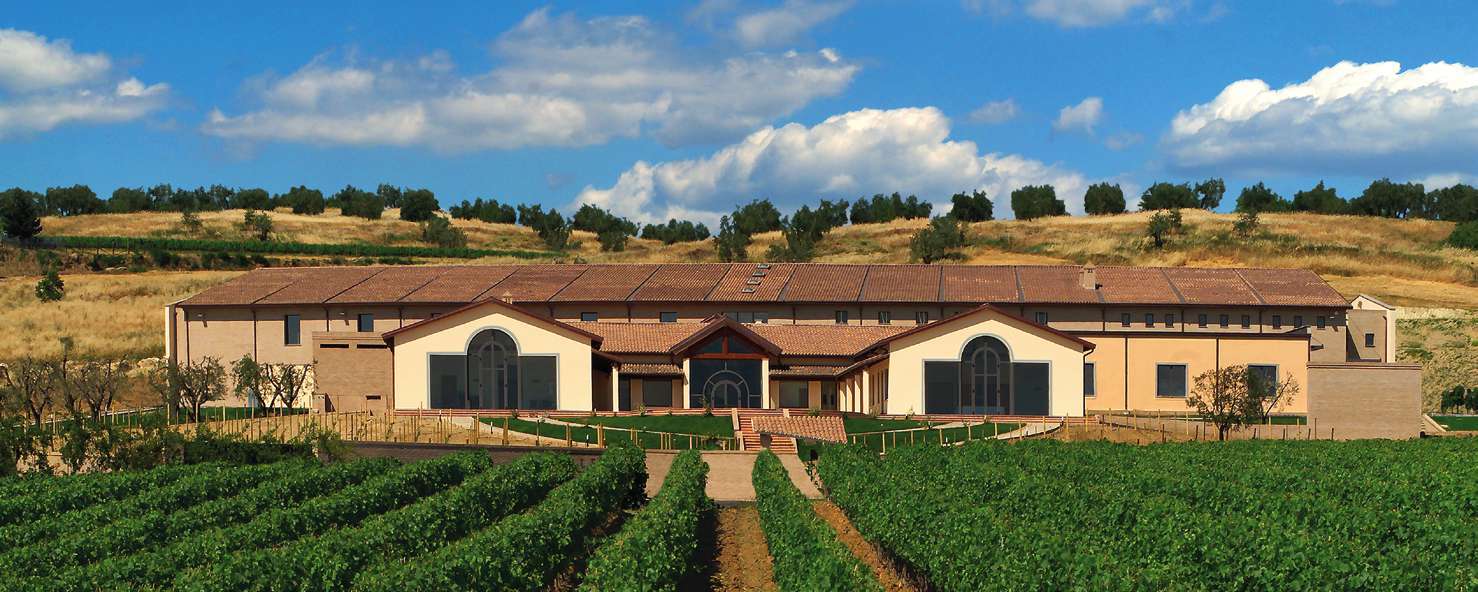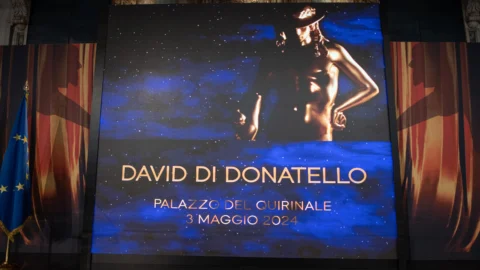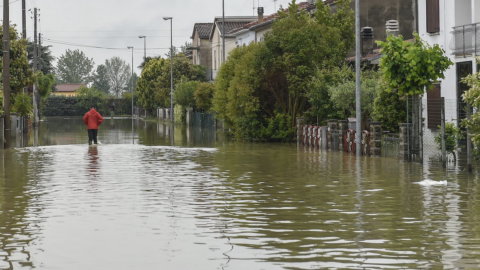An ancient Chinese proverb says "When two brothers work together, mountains turn into gold". I don't know if Riccardo and Franco Cotarella have ever heard of this saying, but it is certain that by starting to work together and then each taking their own path, but always maintaining a very close contact, they have contributed to making real mines of 'gold many Italian wineries by bringing them out if not from anonymity at least from a traditional mold production and successfully launching them on the market. It is in fact due to these two wine wizards, because it is reductive to define them only as oenologists, if today many labels from different regions have achieved prestige and starred quotations in Italy and in the world.
Two brothers who couldn't be more different, one Riccardo, exuberant, full of enthusiasm, always ready for novelty, challenge, innovation. The other more reserved, taciturn, reflective, above all determined in setting himself an ambitious goal, a project of perfectibility, and willing to work on it for years to obtain a result that is only in his thoughts.
But to speak of two brothers is improper, because in reality the Cotarellas are a family, rather a nuclear dynasty that spans several generations and which releases centrifugal energies while always keeping the central nucleus solid and compact. This is their strength to the point that Riccardo and Franco when they decided to put the family business in order and having to choose a denomination for their winery chose, not surprisingly, the wording "Famiglia Cotarella"
And yes, because wine is in their DNA. The bond of this family with the world of wine originates from the grandfather who had land cultivated with vines in Montefiascone. Then in the 1979s Antonio and Domenico Cotarella, winemakers in Monterubiaglio, decided to build the first cellar for their own wine production. Their baton was taken up by their sons Renzo and Riccardo, who were initiated into the study of oenology and agronomy by their far-sighted father who wanted to enrich the company with new family skills. The big turning point came in 1979 when Riccardo and Renzo founded the Cantina Falesco, in Montecchio (TR), transforming what was once a small family business into a successful business to be left to subsequent generations. XNUMX was an important year.
In a few years the methanol channel would explode. In the mid-80s, hundreds of people were poisoned after drinking wine with Methanol added, a colorless organic compound used to increase the alcohol content of wine, because it was cheaper than the sugar normally used. Many consumers encountered irreversible vision damage up to blindness, others suffered profound alterations of the neurological system. There were also deaths. For Italian wine it was an economic cataclysm. Production fell by 50 percent, exports to foreign countries fell by 40 percent. But, as often happens, the wine country wanted to react, rolled up its sleeves and thought well that salvation could be in a wine that focused on quality, with a fair remuneration, rather than on low-priced quantity to reinforce the bloodless wines of others. The Cotarellas had already taken this path on their own and in unsuspecting times.
The great intuition of the Cotarellas, and let's also say their courage, in years when an indistinct wine in a stuffed glass flask was still brought to the table in restaurants, was on the one hand to study the soils and their composition in depth, on the other to recover the ancient vines of the area, which had once offered wines appreciated by Popes and the most illustrious noble families, by setting out in search of ancient clones considered irretrievably lost in once flourishing lands then totally abandoned. They worked on the local grapes, on the land, on the selections, on the culture of the vine and of the wine with a scientific method rather than with chemical products. And in ten years they managed to give life to a wine-phenomenon: theEAST! EAST!! EAST Poggio dei Gelsi, wine of the rescue, which was followed over the years by other important labels such as Grechetto, Vitiano, Marciliano, Montiano, Ferentano, and the RC2 Sagrantino Di Montefalco, just to name a few.
Naturally, the Italian producers grounded by the effects of the Methanol scandal turned to the Cotarellas to be able to obtain prestigious wines from their land. And never choice was happier. Riccardo tried his hand at various challenges, often innovative and revolutionary throughout the national territory, and over time gave his authorship to 53 successful wines. The Galardi winery with his advice produced a "Terra di lavoro" obtained from Aglianico and Piedirosso which marks a fixed point in the wine history of Campania and which Luigi Veronelli defined as the best Italian wine ever. No less interesting are the Falanghina and Aglianico produced by the Samnite cooperative La Guardiense, which has aimed at the production of still and sparkling wines with absolutely excellent quality standards, paying great attention to environmental sustainability or the Due Palme Cellar of Cellino San Marco, a cooperative with two thousand hectares of vineyards in heart of Salento, most of which are still bred in compliance with the Salento winemaking tradition. And we can continue with the Di Majo Norante winery which has produced a Tintilia that has lit, and with surprise, the spotlight on the quality of the Molise wine tradition. From here we move to Umbria where the Cellar Decugnano dei Barbi, produced in 1978 the first Umbrian Classic Method and in 1981 the first Italian noble rot. And what about the great results achieved by the Moretto Polegato family with the extraordinary Prosecco Villa Sandi or by the Treviso-based Barollo winery with the Carbenet Frank IGT which brings a note of modernity to a consolidated winemaking tradition?
And it doesn't end here because we find Riccardo Cotarella also behind the bottles produced by Bruno Vespa from Abruzzo in Puglia and by Massimo D'Alema from Puglia in Umbria, and behind the refined labels produced by Gianmarco and Letizia Moratti, with Cigognola Castle, in the heart Oltrepò Pavese. Finished? Not yet. Because even the Russian ombudsman, Putin's protégé, Boris Titov, presidential candidate last March, has relied on our winemaker to raise the quality of his production, and a Russian oligarch, Konstantin Nikolaev, among the richest Russian men according to Forbes, after buying La Madonnina, a wine estate in Bolgheri, a territory of great supertuscans, called super-Riccardo so as not to look bad in comparison with the neighboring Guado al Tasso of the Marchesi Antinori, with the Ornellaia estate with the San Guido estate.
The story of Renzo Cotarella, on the other hand, is more linear. Instead of the acrobatic experiences of his brother Riccardo, he preferred a long decades-long journey within the most prestigious family of Italian winemakers, the Antinoris, who have been doing this job for 600 years since, in 1385, Giovanni di Piero Antinori became part of the Florentine art of the Vinattieri. Here Renzo Cotarella elected best winemaker in the world in 2001, has worked tirelessly in search of perfection which he considers has not yet achieved a result which according to him is on the horizon with each new conquest. It will also be for this rigor as well as for his personal history that Cotarella has climbed all the steps of the company in recent years to become CEO of the Antinori group, a holding company with a turnover of 150 million, 22 million bottles produced and cellars in Napa Valley, Chile, Malta, Hungary, Romania and Kyrgyzstan.
It is with this desire to always go beyond the hedge that Tignanello has given us in recent years, a bold bet, both in the name, a diminutive that does not suit an important wine destined for large tables, and in the composition, first Sangiovese to be aged in barriques and blended with non-traditional varieties for the Tuscan territory, or Solaia, one of the most appreciated Italian wines in the world which can reach nearly 1000 euros per bottle, or the wonderful Cervaro Della Sala defined by the Italian Sommelier one of the "most acclaimed" white wines of Italy. In short, real monuments of Made in Italy enology.
What about the family business? The Dynasty continues. Today it is in the solid madi of the new generation: Sunday, Richard's daughter with Marta ed Enrica daughters of Renzo. And her respective husbands Pierpaolo, Nicola and Paulo also work within her.
And new bets appear on the horizon. And we will hear about it. Because the story in this family never ends.
The Cotarella family company

Falesco srl winery
Cotarella family
San Pietro, snc
05020 Montecchio (TR)
Tel. +39 0744 9556
Fax + 39 0744 951219
Email: info@falesco.it
Passion for viticulture, enhancement of the wine heritage and a strong sense of belonging to the territory for over thirty years have been the watchword of the Falesco company today renamed Famiglia Cotarella to seal an interrupted generational continuity. The company selects vineyards that offer ideal soil and climatic conditions for growth in the areas of Umbria and Lazio to fully understand their true potential.
The production is structured in five product families: The Traditions, Vitiano, The New Classics, The Cru. The Est! labels are part of the Le Tradizioni base line! East!! Est!!!, the first wine produced by Falesco, and Et Me!. The Vitiano family is made up of Vitiano Bianco, Vitiano Rosato and Vitiano Rosso, while I Nuovi Classici includes Poggio dei Gelsi, Soente and Tellus. The I Cru family, excellence of Falesco production, includes Ferentano, Montiano, Marciliano, Trentanni and RC2. Lastly, the Le Specialità line brings together the sparkling wines Metodo Classico Brut, Metodo Classico Brut Rosé and Anita, the raisin wines Pomele and Passirò, and Grappa di Montiano.




